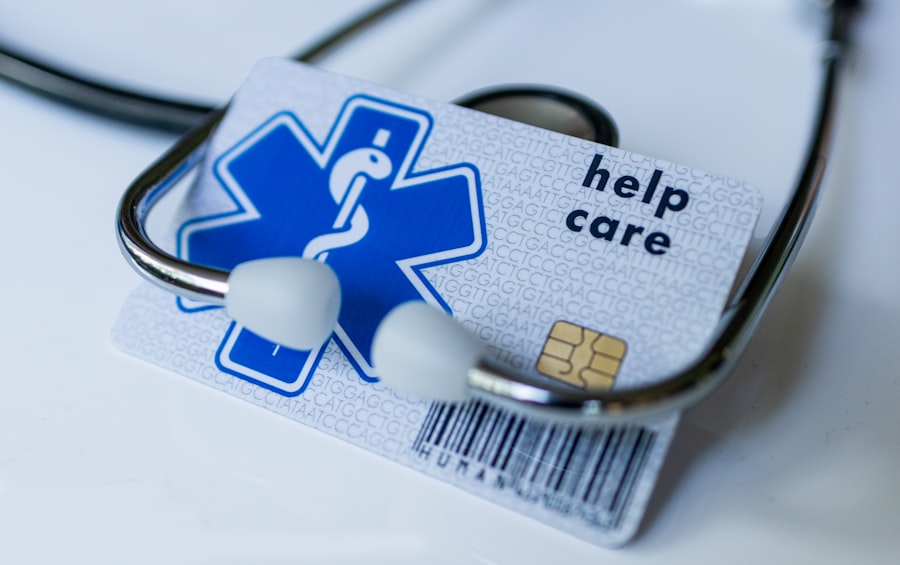Digital marketing has revolutionized the way healthcare organizations communicate with patients, stakeholders, and the broader community. In an era where technology permeates every aspect of life, healthcare providers are increasingly adopting digital marketing strategies to enhance their visibility, improve patient engagement, and deliver valuable health information. The shift from traditional marketing methods to digital platforms has not only transformed how healthcare services are marketed but has also redefined the patient experience.
With the rise of the internet and mobile technology, patients now have access to a wealth of information at their fingertips, making it imperative for healthcare organizations to establish a robust online presence. The integration of digital marketing into healthcare is multifaceted, encompassing various channels such as social media, search engine optimization (SEO), email marketing, and content marketing. Each of these channels plays a crucial role in reaching diverse patient demographics and addressing their unique needs.
For instance, younger patients may prefer engaging with healthcare content on social media platforms, while older patients might rely more on email newsletters or informative websites. As healthcare providers navigate this digital landscape, they must tailor their marketing strategies to resonate with their target audience, ensuring that they not only attract new patients but also foster long-term relationships built on trust and transparency.
Key Takeaways
- Digital marketing enhances patient engagement by providing accessible health information and interactive communication channels.
- Social media platforms are vital tools for raising healthcare awareness and educating diverse audiences effectively.
- Personalized medicine enables targeted marketing strategies that cater to individual patient needs and preferences.
- Data analytics plays a crucial role in optimizing healthcare marketing campaigns and improving patient outreach.
- Telemedicine integration with digital marketing expands healthcare access while raising ethical and privacy considerations.
The Impact of Digital Marketing on Patient Engagement
Digital marketing has significantly enhanced patient engagement by providing multiple touchpoints for interaction between healthcare providers and patients. One of the most notable impacts is the ability to facilitate two-way communication. Through social media platforms, blogs, and interactive websites, patients can ask questions, share experiences, and provide feedback in real-time.
This level of engagement fosters a sense of community and belonging among patients, which is particularly important in healthcare settings where individuals often seek support and understanding from others facing similar challenges. Moreover, digital marketing enables healthcare organizations to deliver personalized content that resonates with patients on an individual level. By utilizing data analytics and patient segmentation techniques, providers can tailor their messaging to address specific health concerns or interests.
For example, a hospital may create targeted campaigns for diabetes management that include educational resources, success stories from other patients, and invitations to local support groups. This personalized approach not only enhances patient engagement but also empowers individuals to take an active role in managing their health, ultimately leading to better health outcomes.
Leveraging Social Media for Healthcare Awareness and Education

Social media has emerged as a powerful tool for raising awareness about health issues and educating the public. Healthcare organizations can utilize platforms such as Facebook, Twitter, Instagram, and LinkedIn to disseminate important information about diseases, preventive measures, and available treatments. For instance, during public health crises like the COVID-19 pandemic, social media played a pivotal role in sharing timely updates about safety protocols, vaccination availability, and health guidelines.
By leveraging these platforms effectively, healthcare providers can reach a broader audience and ensure that critical information is accessible to all. In addition to awareness campaigns, social media serves as an educational platform where healthcare professionals can share their expertise through live Q&A sessions, webinars, and informative posts. For example, a pediatrician might host a live session on Instagram discussing childhood vaccinations, addressing common misconceptions while encouraging parents to ask questions.
This interactive format not only educates the audience but also humanizes healthcare professionals, making them more approachable and relatable. By fostering open dialogue and providing valuable insights, healthcare organizations can build trust with their audience and position themselves as credible sources of information.
Personalized Medicine and Targeted Marketing
| Metric | Personalized Medicine | Targeted Marketing |
|---|---|---|
| Data Sources | Genomic data, Electronic Health Records, Biomarkers | Customer demographics, Browsing behavior, Purchase history |
| Primary Goal | Tailor treatments to individual genetic profiles | Deliver customized advertisements to specific audience segments |
| Personalization Level | Individual patient level | Segment or individual consumer level |
| Key Technologies | Genomic sequencing, AI-driven diagnostics, Biomarker analysis | Machine learning, Predictive analytics, CRM systems |
| Effectiveness Metric | Improved patient outcomes, Reduced adverse drug reactions | Click-through rate, Conversion rate, Customer engagement |
| Challenges | Data privacy, High cost, Regulatory approval | Data privacy, Ad fatigue, Accurate targeting |
| Example Use Case | Targeted cancer therapies based on tumor genetics | Personalized email campaigns based on user behavior |
The concept of personalized medicine has gained traction in recent years, emphasizing the importance of tailoring medical treatment to individual characteristics. This approach extends beyond clinical practice into the realm of marketing, where targeted strategies can enhance patient engagement and satisfaction. By leveraging data analytics and patient demographics, healthcare organizations can create highly personalized marketing campaigns that resonate with specific patient segments.
For instance, a cancer treatment center might develop targeted messaging for different types of cancer patients based on their age, gender, and treatment preferences. Targeted marketing not only improves the relevance of healthcare communications but also increases the likelihood of patient conversion. When patients receive information that speaks directly to their needs and concerns, they are more likely to engage with the content and seek out services.
For example, a fertility clinic may use targeted ads on social media platforms to reach women in their 30s who are considering family planning options. By addressing their unique challenges and providing tailored solutions, the clinic can effectively attract potential patients who may have otherwise overlooked their services.
Utilizing Data Analytics for Healthcare Marketing Strategies
Data analytics plays a crucial role in shaping effective healthcare marketing strategies by providing insights into patient behavior, preferences, and trends. By analyzing data from various sources such as website traffic, social media engagement, and patient feedback surveys, healthcare organizations can gain a deeper understanding of their target audience. This information allows them to refine their marketing efforts and allocate resources more effectively.
For instance, if analytics reveal that a particular blog post on heart health receives high engagement rates, a hospital may choose to create additional content around that topic or promote it through targeted advertising. Furthermore, data analytics enables healthcare providers to measure the effectiveness of their marketing campaigns in real-time. By tracking key performance indicators (KPIs) such as conversion rates, click-through rates, and patient acquisition costs, organizations can assess which strategies are yielding positive results and which need adjustment.
This iterative approach allows for continuous improvement in marketing efforts, ensuring that resources are invested in initiatives that drive patient engagement and satisfaction.
The Role of Telemedicine and Digital Marketing

The rise of telemedicine has transformed the landscape of healthcare delivery, making it more accessible than ever before. Digital marketing plays a vital role in promoting telemedicine services by educating patients about its benefits and addressing any concerns they may have regarding virtual consultations. For example, healthcare organizations can create informative content that explains how telemedicine works, what patients can expect during a virtual visit, and the types of services available through telehealth platforms.
Moreover, digital marketing strategies can help healthcare providers reach underserved populations who may benefit from telemedicine but are unaware of its availability. Targeted advertising campaigns on social media or search engines can effectively inform these individuals about remote care options tailored to their specific needs. By highlighting the convenience and flexibility of telemedicine services—such as reduced travel time and increased access to specialists—healthcare organizations can encourage more patients to embrace this innovative approach to care.
Overcoming Challenges and Ethical Considerations in Digital Healthcare Marketing
While digital marketing offers numerous advantages for healthcare organizations, it also presents challenges and ethical considerations that must be addressed. One significant challenge is navigating the complex regulatory landscape surrounding healthcare advertising. Organizations must ensure that their marketing practices comply with regulations such as HIPAA (Health Insurance Portability and Accountability Act) to protect patient privacy while still effectively promoting their services.
Ethical considerations also come into play when it comes to the accuracy of health information shared through digital channels. Misinformation can spread rapidly on social media platforms, potentially leading to harmful consequences for patients who rely on inaccurate data for decision-making. Healthcare organizations have a responsibility to provide evidence-based information while actively combating misinformation by promoting credible sources and engaging with their audience in meaningful ways.
Future Trends and Innovations in Digital Healthcare Marketing
As technology continues to evolve, so too will the landscape of digital healthcare marketing. One emerging trend is the increased use of artificial intelligence (AI) and machine learning to enhance patient engagement strategies. AI-driven chatbots are becoming more prevalent in healthcare settings, providing instant responses to patient inquiries while streamlining appointment scheduling processes.
These tools not only improve efficiency but also enhance the overall patient experience by offering immediate support. Another trend is the growing emphasis on video content as a means of communication in healthcare marketing. Video allows for more dynamic storytelling and can effectively convey complex medical information in an easily digestible format.
Healthcare organizations are increasingly utilizing video testimonials from patients or educational videos featuring healthcare professionals discussing various health topics. This approach not only engages viewers but also builds trust by showcasing real experiences and expertise. In conclusion, digital marketing has become an integral component of modern healthcare strategies.
By leveraging various digital channels effectively—ranging from social media engagement to data analytics—healthcare organizations can enhance patient engagement while navigating the complexities of ethical considerations and regulatory compliance. As technology continues to advance, embracing innovative approaches will be essential for staying ahead in this rapidly evolving landscape.



